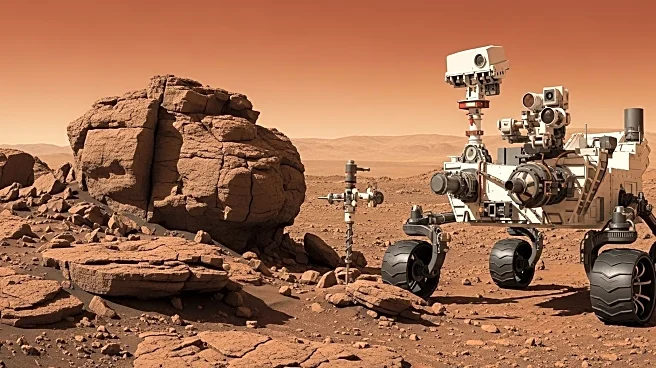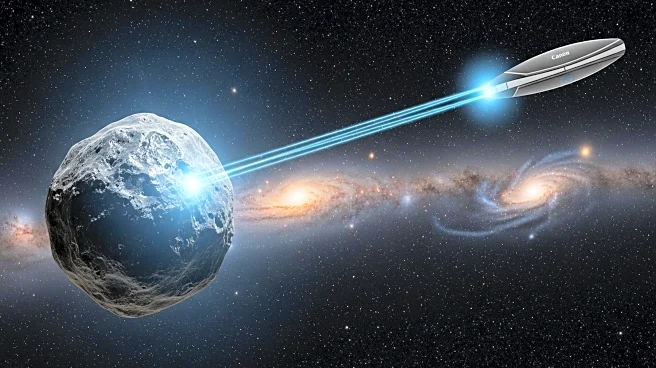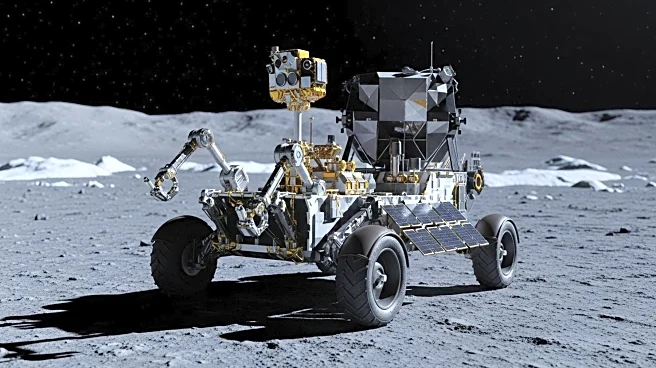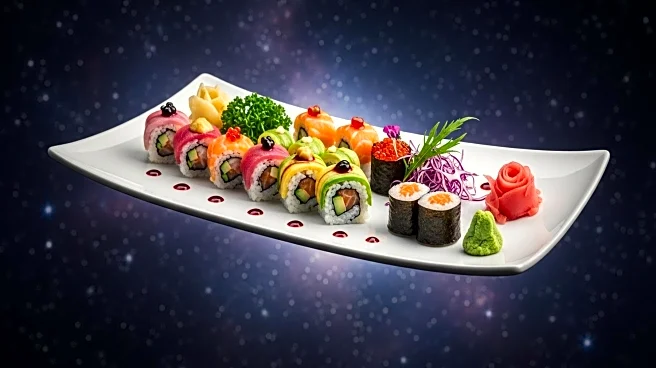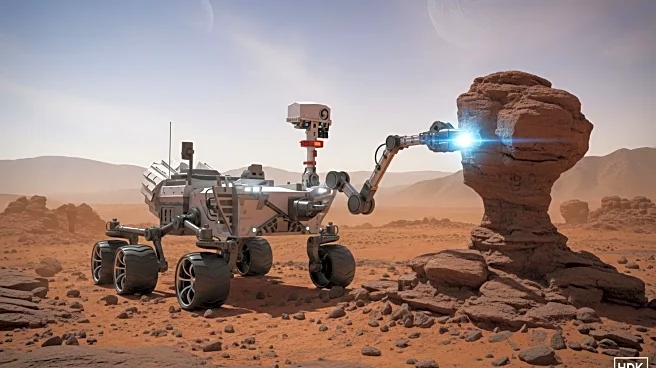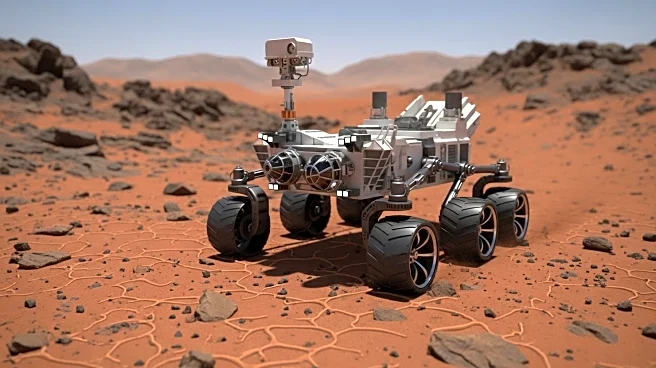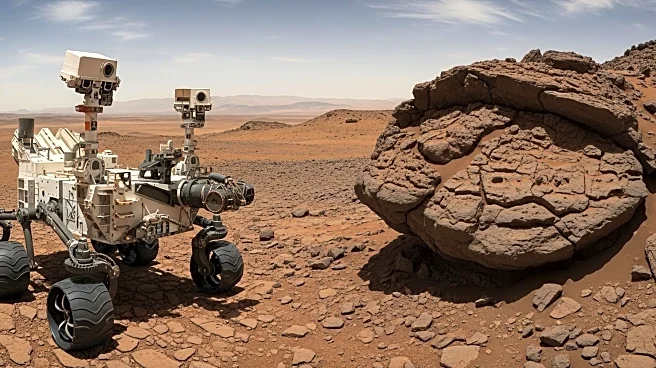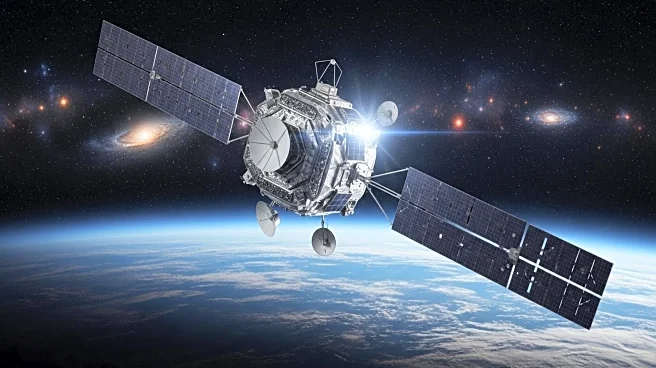What's Happening?
NASA's Perseverance rover has abraded two distinct rocks on Mars, revealing diverse geological features. The rover is exploring the Vernodden area along Jezero crater's rim, studying ancient crustal materials known as 'megablocks.' The first target, 'Peachflya,' shows clasts of different mineral compositions, suggesting it may be a breccia formed from older materials. The second target, 'Klorne,' exhibits chemical alteration with a green hue, indicating the presence of serpentine minerals.
Why It's Important?
The findings from Perseverance provide valuable insights into Mars' geological history, helping scientists reconstruct the processes that shaped the planet billions of years ago. Understanding the composition and formation of these rocks can inform theories about Mars' past environment and potential habitability. The discovery of diverse mineral compositions highlights the complexity of Mars' crust and the dynamic processes that have occurred over time.
What's Next?
Perseverance will continue to examine the 'Monacofjellet' megablock, which presents another distinct spectral signature. The rover's ongoing exploration will contribute to a comprehensive understanding of Mars' geological history, aiding in the search for signs of past life and informing future missions to the planet.
Beyond the Headlines
The study of Mars' geological features underscores the importance of robotic exploration in advancing planetary science. Perseverance's findings contribute to the broader goal of understanding Mars' potential for past life and its suitability for future human exploration.

